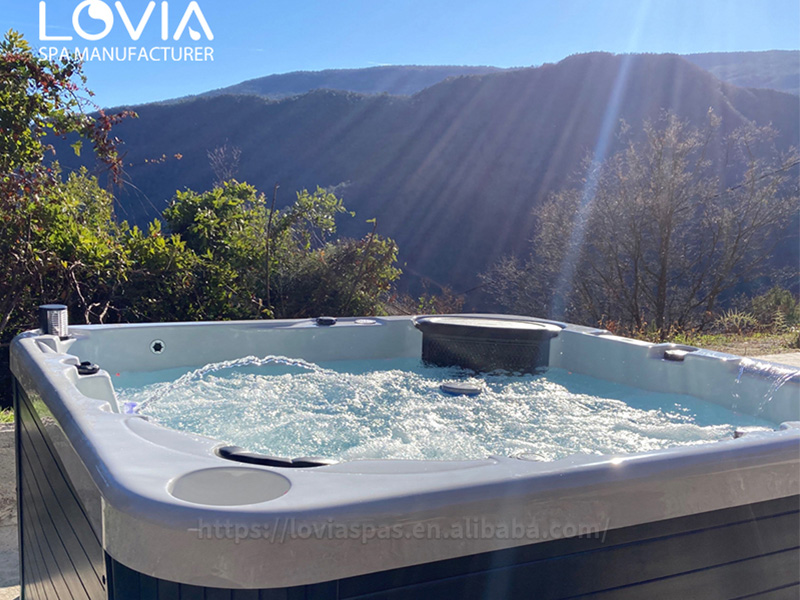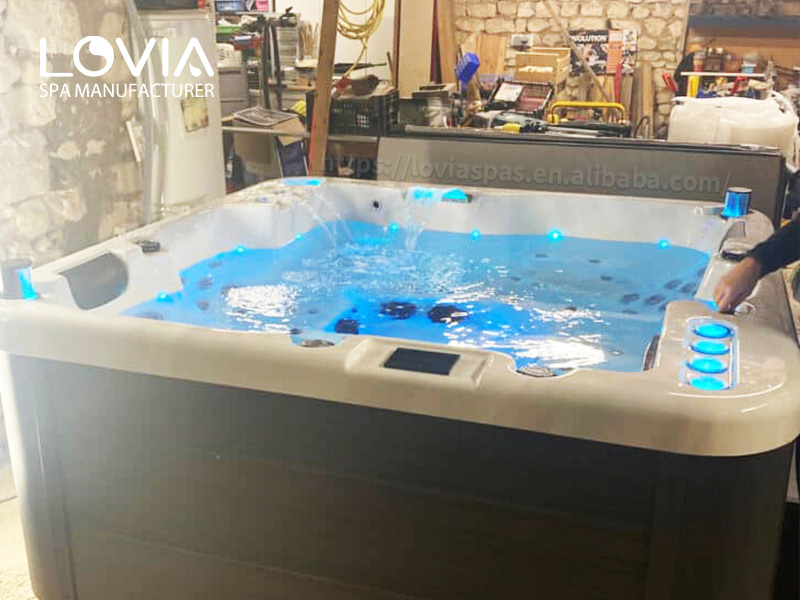
How to Get Rid of Foam in Hot Tub?
2024-05-17 15:30When foam appears in your hot tub water, it can be confusing and unsettling. I'm sure many hot tub users struggle with this issue, are you wondering why does my hot tub foam? How to get rid of bubbles?
Below, I'll explore the causes of hot tub foam and provide the 3 best ways to get rid of hot tub foam to help you better enjoy your hot tub.

Why is My Hot Tub Foamy?
Excessive foam in most people's hot tubs is generally caused by 3 factors: An imbalance in the pH of the water, insufficient calcium hardness of the water, and the use of skin care products and soaps.
● The pH of water is an important factor. When the pH of your hot tub water is too high or too low, it can cause foaming. This is usually caused by too many or too few chemicals in the water, and you can determine if this problem is present by testing the pH of your hot tub water.
● Insufficient calcium hardness in hot tub water is also one of the causes of foaming. Calcium is an important mineral that controls the surface tension of water, and if the calcium content in your hot tub water is too low, it can increase foam production. This situation is more obvious especially at high temperatures.
● The last common reason is the use of skin care products and soaps. When people use skin care products and soaps that contain a lot of chemicals in their hot tubs, these chemicals can create foam in the water.
How to Get Rid of Foam in Hot Tub?
3 Best Ways to Get Rid of Hot Tub Foam:
Way 1: Use Hot Tub Defoamer
The hot tub defoamer is a quick way to eliminate bubbles and works quickly in seconds. Once defoaming agents are added to a hot tub, they quickly spread across the surface of the water and reduce the surface tension of the water, disrupting foam formation. The foam will begin to disappear within seconds of the defoamer contacting the water, and the entire process may be completed within minutes, depending on the formulation of the defoamer and the amount and stability of the foam in the water.
Generally speaking, defoaming agents may include silicone oil ingredients, surfactants (sodium dodecyl sulfate (SDS), sodium octyl sulfate (SLS)), organic solvents, and antifoaming agents. When using defoaming agents, be sure to follow the instructions in the product instructions and avoid overuse to prevent unnecessary side effects.
Way 2: Adjust the pH Value of Water
The appropriate pH range for hot tub water is usually between 7.2 and 7.8, which is a range that is comfortable and safe without producing a lot of foam. When the pH deviates from this range, foaming may increase.
● You need to conduct a pH test before adjusting the pH value. The current pH of your hot tub water is typically tested using pH test strips or a meter (this test method is more convenient and suitable for most people).
● According to the test results, use appropriate pH adjusters to adjust the pH of the water. Generally, pH increasing agents and pH lowering agents are commonly used regulators. The pH increasing agent can be an alkaline substance such as sodium bicarbonate (baking soda) or sodium hydroxide (caustic soda), while the pH lowering agent can be an acidic substance such as sulfuric acid or hydrochloric acid. Add conditioners gradually as needed and test again and again until you reach the desired pH.
NOTE: Bleach and acid-based chemicals are not recommended for adjusting the pH of hot tub water.
Bleach is a strongly alkaline chemical, and while it can change the pH of water, it can also cause severe irritation and damage to human skin. Acid chemicals like sulfuric or hydrochloric acid can lower the pH of water, but they can also cause serious harm to the skin and respiratory system.
Way 3: Adjust Calcium Hardness
Calcium hardness values for hot tub water typically range between 150 and 250 ppm. Within this range, the calcium hardness level is ideal to minimize limescale and foam generation while also providing a comfortable soaking experience.
If the calcium hardness value is too low, it may cause the water to become too soft, which may increase foam production and may also adversely affect the hot tub equipment. On the other hand, if the calcium hardness value is too high, it may lead to the formation of scale, which may also increase foam production and may also affect the cleanliness and comfort of the water.
● Same as adjusting the pH value of water, you also need to test the calcium hardness before adjusting the calcium hardness. The calcium hardness level of your hot tub water can be accurately tested using specialized test strips or testing instruments.
● If the calcium hardness of the water is below the recommended range (between 150 and 250ppm), calcium chloride can be used. Calcium chloride is a common water treatment chemical that can help increase water hardness and reduce foaming. Just add the right amount of calcium chloride to your hot tub and wait a while for it to do its work.
● When the calcium hardness value of hot tub water is too high, consider using chelating agents or other compounds. These agents can help reduce the concentration of calcium ions in water, thereby reducing water hardness levels. Common chelating agents include citric acid and EDTA (ethylenediaminetetraacetic acid).

How to Prevent Foaming in Your Hot Tub?
Clean and Replace Filters
Hot tub filters play a key role by filtering out impurities and contaminants from the water. However, if the filter is not cleaned or replaced in time for a long time. Dirt such as grease and soap residue may accumulate in the filter, which is one of the main causes of foam. Therefore, regular filter cleaning and replacement is one of the keys to preventing foam problems. (Refer to this article to learn about filter cleaning and replacement cycles)
Clean Hot Tub Walls Regularly
Dirt and grease residue on the surface of your hot tub walls can also contribute to foaming. Therefore, regular cleaning of your hot tub walls can effectively prevent foam problems from occurring. Clean with a mild detergent and a soft cloth to thoroughly remove dirt and residue and keep your hot tub clean and hygienic. (Refer to this article to learn how to clean a hot tub)
Finally, no matter which method you use to get rid of the foam in your hot tub. When it comes to chemicals, you must strictly follow the manufacturer's guidelines and safe operating manuals.
The material of your hot tub can also affect the use of chemicals, so consult a professional or contact the manufacturer if necessary.
